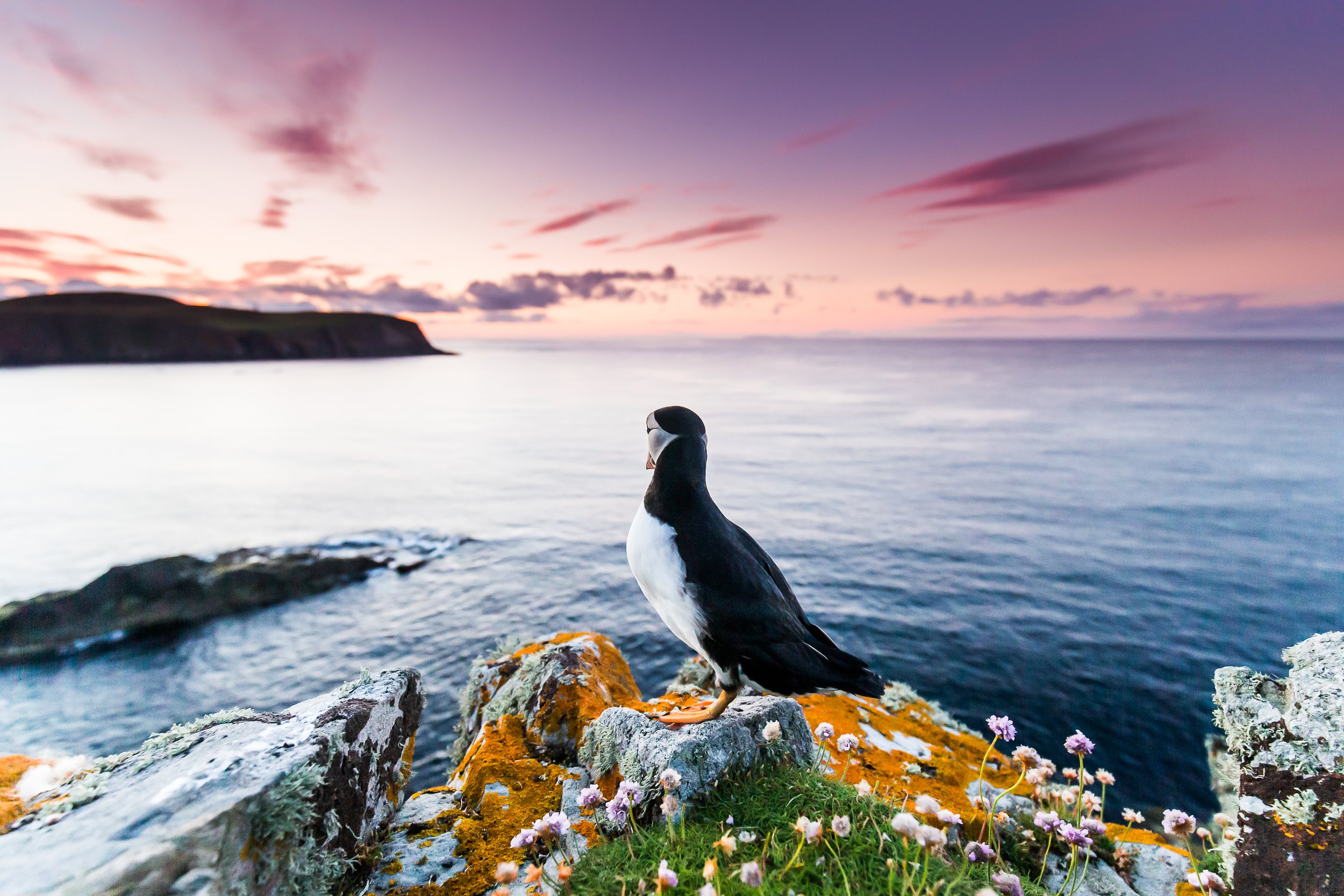
WILD ISLES: OUR COAST
PUFFINS: LIFE ON THE ATLANTIC EDGE
DISCOVER.
LEARN.
INSPIRE.
Currently listed as vulnerable on the IUCN red list, meaning their global population is on a downward trend, the Atlantic puffin faces an uncertain future
Several factors contribute including unsustainable fishing, marine pollution, and invasive ground predators, but the main threat arises from the change in distribution and numbers of their primary food source, sandeels, due to our warming seas. The puffins’ fate and sandeels are entwined; if we lose the sandeels we run the risk of losing our puffins.
Across Europe puffin numbers have been declining, mainly because rising sea temperatures reduce the numbers of plankton, the main food source of sandeels which, in turn, are the puffin’s primary food. Reduced plankton has a monumental impact on the food chain, and some birds have been forced to abandon their regular feeding grounds in the North Sea, instead journeying far into the Atlantic in search of food. These travails leave parent birds exhausted, and pufflings without food for extended periods, greatly increasing mortality rates.
AN UNCERTAIN FUTURE..
Europe hosts ninety per cent of the world’s Atlantic puffin breeding population, the greatest stronghold being Iceland, home to sixty per cent of the world population. Living in colonies makes the birds vulnerable to any adverse changes in environment, such as oil spills or unforeseen natural disasters and our warming world that might affect their feeding grounds. With their low reproductive rate of only one egg during the season, such events are likely to have a massive impact, with populations taking decades to recover.
Despite this, it is all not bad news. Around two thousand breeding pairs on Skokholm Island and six thousand pairs on Skomer make these Welsh islands two of Britain’s most important puffin colonies. With numbers now reaching their highest levels since the 1940s, they are seemingly unaffected by the food shortages and other woes that plague the rest of the world’s populations. Research may show why numbers are increasing at these isolated breeding grounds, and the answer may hold the key to the future of other colonies.
With over ten million adult puffins globally, it is not too late to reverse the downward trend, although, since the turn of the century, climate change, overfishing and pollution have increasingly made it more difficult for these wonderful birds to find food and raise the next generation. There is still hope, but salvation can only come from changes in human attitudes and better stewardship of our oceans and coastal environments.

OUR BLUE HEART: NEEDS PROTECTING







